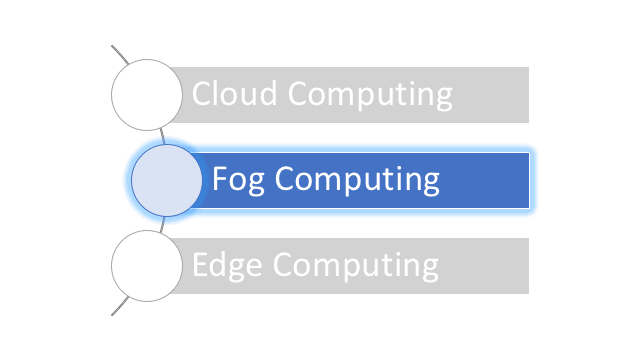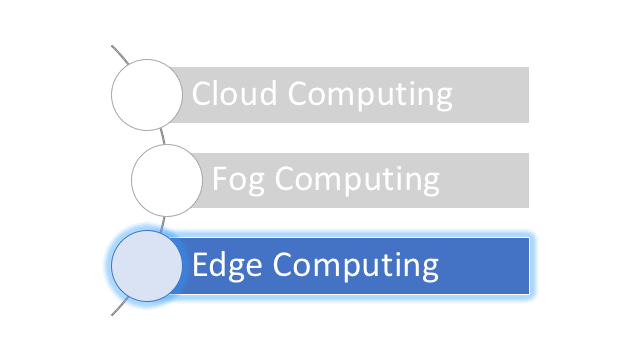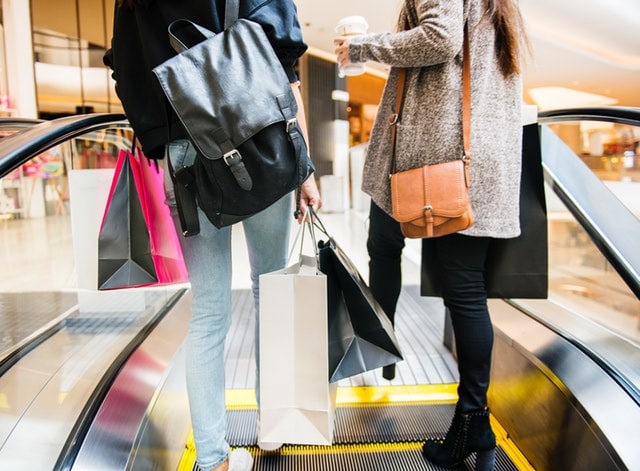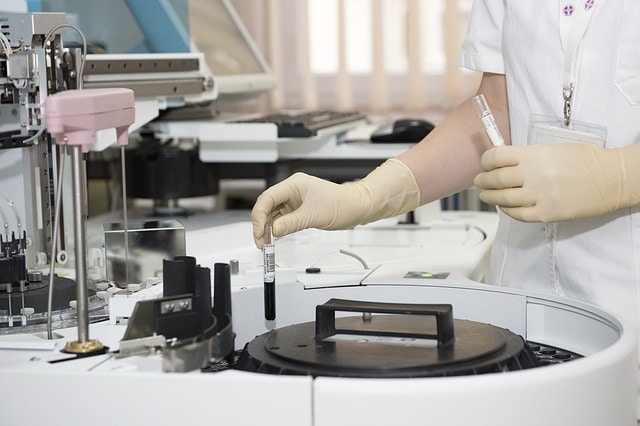Cloud Computing and it’s Achilles Heel
It’s well documented that cloud computing has a weakness in the form of increased latency. This becomes highly problematic for latency-sensitive applications and services.
In most cases the actual cloud platform is not physically located near the data source, so data transfer takes additional time. Data can only travel so fast.
The many benefits of edge and fog computing can help address this latency issue whilst in parallel extend the overall reach of the cloud service itself.
Introduction to the Internet of Things (IoT)

Before we delve deeper into the benefits of edge and fog computing, it’s important to have an overall appreciation of IoT and it’s relationship with cloud services.
The Internet of Things (IoT) is the definition given to any electronic device that does not require human interaction and is able to connect to the Internet and share data with other connected devices.
These devices includes sensors, security cameras, smart speakers, smart fridges, etc. Laptops, PC’s, smartphones, tablets etc are technically not IoT devices, but rather ‘user devices’.
IoT is on the cusp of radically changing the technology landscape. Ericsson predicts that there will be 29 billion internet connected devices by 2022, and 18 billion of those will be related to IoT.
Cisco have suggested that figure may be closer to 50 billion.
The amount of data expected to be in transit between IoT devices and the cloud is huge. Our thirst for real-time analytics means unnecessary latency is a problem we can ill afford.
Is Cloud Computing Here For Good?

Having your data, virtual servers, storage and applications hosted in the cloud offers a huge number of business advantages. A recent article by Forbes has predicted that 83% of all enterprise workloads will be in the cloud by 2020.
It’s fair to presume that cloud computing is here to stay, but there is a problem.
As our beloved (and clearly overworked) Scottish engineer from Star Trek quite rightly mentions at every opportune moment when things get a tad dicey……
The ‘fly in the ointment’ is our increasing demands on the cloud to lavish us with lower and lower latency. This is obviously not a match made in heaven where large distances are involved. Light moves pretty quick, but not always quick enough.
We must look to the benefits of edge and fog computing.
Overview of Fog Computing

Fog computing uses the concept of ‘fog nodes’ that reside either on the local LAN or a hop or two across the WAN of a private providers network. These fog nodes have higher processing and storage capabilities than edge IoT devices but are still located near to the data source.
Fog nodes can process the data from local edge IoT or user devices far quicker than sending the request to the cloud for centralised processing. This allows latency to be kept to a minimum for time sensitive applications and services. Data can also be sent by the fog nodes to the cloud for further centralised processing and storage if required.
Imagine for example you have a smart-watch and wanted to urgently enable recording on a locally located IoT security camera. If the smart-watch does not have the ability perform the processing, the request can be sent to a local fog node for the compute function. This is far quicker than offloading the processing to the centralised cloud platform.
Overview of Edge Computing

IoT and user devices are becoming increasingly powerful allowing more of your data to now be processed directly by them at the edge.
The edge computing model aims to have some or all of your data processed on the local IoT or user device itself rather than being sent to a fog node or all the way to the cloud for analysis. After being processed locally on the edge device, the data can still be sent to the cloud for further intensive centralised processing and analysis.
By partially (or fully) processing the data on the local edge device, the overall performance is greatly enhanced.
As an example, a manufacturing system can have any number number of more powerful IoT sensors capable of not only monitoring, but can compute data locally and make adjustments to the actual manufacturing process in real-time if required.
Fog Computing Vs Edge Computing
It does seem that there is a general difference in opinion of the precise definition of ‘fog computing’ and ‘edge computing‘. They are both designed to reduce latency by moving the compute element as close as possible to the data source to speed up processing of that data.
Edge computing processes the data on the local IoT or user device, whereas fog computing allows the data to be processed on a more powerful local fog node located on the LAN or a hop or two across the WAN.
I don’t think anyone should get 50 lashes if they use edge and fog to mean the same thing.
Enhancing Cloud Computing
Edge and fog computing models compliment rather than replace cloud computing.
Both design models ensure that time sensitive data can be processed locally either on the edge device or fog node without having to be sent back to the cloud. Any remaining relevant data can still be sent to the cloud for further analysis and storage.
10 Benefits of Edge and Fog Computing
Drawbacks of Fog and Edge Computing
Can we all now relax now that edge and fog computing have ridden in to save the day? Alas the trouble with reality is it’s never quite that straight forward. Here are the three main disadvantages worth your consideration before you make the leap.
1. Increased Design Complexity
The use of more sophisticated edge IoT, user devices and fog nodes on your network will increase complexity and the overall support requirements.
2. Physical Security Considerations
Enhanced edge devices and fog nodes may be located in less secure environments than a central cloud platform in a secure data centre can provide.
3. Decentralised Design
The centralised model that cloud computing provides will make overall platform management and provisioning of hardware more time-intensive.
Use Case Examples For Specific Sectors
Both edge and fog computing design models are best suited for businesses that have a requirement for real-time data analysis and also perform a swift action based on that data. Let’s take a look at 4 sectors that can benefit.
Retail Sector

Internet of Things (IoT) is allowing innovative ways for brick-and-mortar stores to enhance overall customer experience. In-store staff can use handheld devices to provide customers with additional product information, check stock or perform on the spot payment transactions to reduce check-out queues.
Reducing network delay is crucial for these real-time customer services. Edge and fog computing are the perfect enhancement to the existing cloud computing model to deliver these services quickly and efficiently.
Manufacturing Sector

Edge and fog computing can greatly reduce the overall network delay for IoT devices responsible or collecting and analyzing real-time manufacturing data.
This can increase overall manufacturing efficiency as IoT sensors can now gather (and analyze) data locally in real-time. For example, the current condition of any part of the manufacturing process can now be automatically adjusted, refined and alerted on.
Healthcare Sector

Edge and fog computing can be used to increase the performance of remote healthcare services by reducing latency. Wearable or implanted IoT devices can now be deployed to gather, monitor and analyse real-time patient data.
Patents are able to stay at home with their IoT devices transmitting all the required patient data directly to the hospital systems. This reduces hospital
Transportation Sector

Because real-time data processing allows for data being collected across a city to be processed faster, services such as traffic management will be greatly enhanced.
Traffic management systems can use edge and fog computing for real-time data analysis to alter traffic lights and intelligent road signs the moment an accident or road blockage occurs.
Conclusion
Using a mixture of edge, fog and cloud computing will become the norm for most business. WiFi/LAN connected IoT and user devices will all be consuming a sites WAN bandwidth if their only option is to speak to the cloud for a particular service.
The reliance on cloud computing will continue to grow year on year. However the increasing amount of real-time data generated by IoT devices is not best suited to the centralised cloud design. The edge and fog computing models address this issue and will encourage a shift to a more hybrid design.
Both edge and fog computing offers a number of advantages in a business world that is becoming more reliant on real-time analytics data to keep competitive.
Looking To Increase Website Traffic?
If you would like to learn more about how Amber Networks can help to increase traffic to your website, please get in touch.

